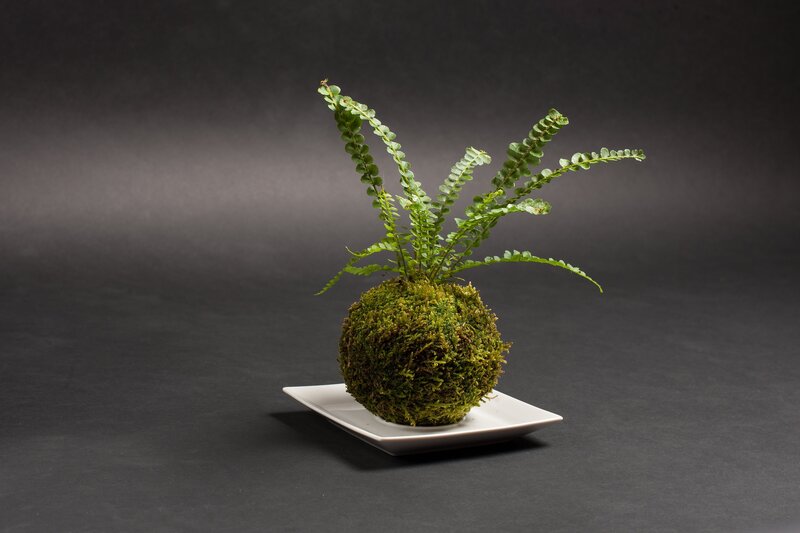Discover the Top 3 Tips for Designing a Garden You Can Move Anywhere
Designing a portable garden gives you the freedom to enjoy greenery wherever you go, whether you're living in an apartment, moving frequently, or simply seeking flexibility for your outdoor space. Portable gardens offer a world of possibilities, from mobile vegetable beds on wheels to compact herb planters perched on your balcony. If you're ready to create a flexible oasis that moves with you, you're in the right place. In this comprehensive guide, you'll discover the top 3 tips for designing a garden you can move anywhere, along with expert advice on containers, plant selection, and maintenance--everything you need for a successful moveable garden venture.
Why Choose a Portable Garden?
Modern lifestyles call for flexible solutions. Portable gardens fit perfectly into today's need for mobility, adaptability, and space-saving design. Whether you're a city dweller with limited outdoor access, a frequent mover, or someone who likes to reimagine their space often, moveable gardens are for you.
- City apartments: Shift your garden as sun and seasons change.
- Rental homes: Take your cherished plants with you when you move.
- Small spaces: Rearrange your greenery to create space or privacy as you need.
- Outdoor events: Use mobile gardens to transform patios or socialize in style.
Gardens you can move anywhere not only enhance your living area, but also offer resilience against extreme weather, pests, and other hazards.

The Top 3 Tips for Designing a Transportable Garden
Ready to start? Here are the three most essential tips for creating a portable garden that thrives no matter where life takes you.
1. Select the Right Containers: Lightweight, Sturdy, and Stylish
Portable garden design starts with choosing appropriate containers. The right pots and planters make all the difference--both in appearance and practicality.
- Material Matters: Opt for containers made from lightweight materials like plastic, fiberglass, resin, or advanced composites. While ceramic and terra cotta are classic, they can be heavy and fragile.
- Drainage Is Crucial: Ensure every pot has adequate drainage holes to prevent root rot and keep plants healthy when transferring them from place to place.
- Mobility Features: Choose containers with built-in handles, detachable wheels, or buy rolling plant caddies. These make it easy to relocate plants without strain or damage.
- Size and Shape: Pick pots large enough for strong root systems but not so big they become unmanageable. Tall, narrow containers are easier to move than wide, squat ones.
- Stackability and Modular Design: Look for stackable planters or modular garden kits. They maximize vertical growing for herb gardens or flowers and can be easily rearranged or moved as units.
Remember, the perfect portable pots for gardens you move are ones you can safely and comfortably lift or wheel--even when filled with mature plants and soil.
2. Choose the Best Plants for a Movable Garden
The secret to designing a garden that can move with you lies in thoughtful plant selection. Not all species adapt well to frequent relocation or container life. Consider the following:
Hardy and Adaptable Varieties- Herbs: Basil, mint, parsley, chives, and thyme are compact, forgiving, and thrive in confined spaces.
- Leafy greens: Lettuces, arugula, spinach, and kale provide continuous harvest with minimal fuss.
- Dwarf vegetables: Look for patio or dwarf versions of tomatoes, peppers, eggplants, and carrots suited for pot life.
- Flowers: Marigolds, pansies, petunias, nasturtiums, and violets are vibrant choices that tolerate movement well.
- Succulents and cacti: These elegant, drought-tolerant plants are unusually portable and resilient.
- Start Small: Begin with young, healthy plants that can easily adjust to life on the move.
- Group by Needs: Arrange plants in clusters with similar sun, water, and soil requirements for easier care and transport.
- Think Vertically: Use hanging baskets, vertical planters, and tiered shelves to make the most of your space and keep things portable.
- Root Management: Prune and divide perennials regularly to prevent rootbound conditions and support healthier plants.
Movable gardens also benefit from lightweight soil mixes that combine potting soil, compost, and lightweight materials such as perlite or coconut coir. This ensures excellent drainage while minimizing weight.
3. Maximize Flexibility: Plan for Easy Transportation and Seasonal Shifts
Your moveable garden design should allow for smooth transitions--whether you're shifting planters from sun to shade, rotating displays for seasonal color, or preparing for an unexpected move.
Smart Placement Strategies- Sun Tracking: Use portable planters to chase the sun or evade harsh midday rays as needed. Mark sun patterns across your deck or windowsill for optimal placement.
- Weather-Ready: Quickly relocate fragile plants indoors during storms or frosts. Mobile designs make it effortless to protect your investments.
- Event-Driven Design: Reconfigure your garden layout for backyard gatherings, alfresco dinners, or just a change of scenery. Your garden, your way!
- Wheeled Caddies and Dollies: These are invaluable for safely rolling larger containers over patios, sidewalks, and floors without injury or spillage.
- Protecting Roots: Move plants when soil is slightly moist to avoid stress but heavy enough to prevent spilled soil.
- Planning for a Big Move: If relocating to a new address, group planters by fragility, size, and sunlight requirements. Pack them snugly and secure them in transit to minimize shocks.
- Seasonal Shuffles: Move plants to optimal positions as light, temperature, and weather patterns change through the year.
Incorporating shade sails, trellises on wheels, or detachable balcony rail planters will add even more adaptability to your mobile garden setup.
The Benefits of a Moveable Garden
Why put in the effort to create a garden you can take anywhere? The advantages of portable gardening are many--both for your plants and your lifestyle.
- Adaptability: Change your garden's location, layout, and function at will.
- Plant Health: Protect plants from harsh environmental conditions by shifting them indoors or into shade as needed.
- Personal Comfort: Reorganize your space to suit events, aesthetics, or changing needs.
- Efficient Use of Space: Stagger, stack, and organize containers to utilize every patch of sunlight.
- Eco-Friendly: Take your collection along when you move, reducing waste and starting costs at your new home.
- Accessibility: Portable gardens are often designed at a convenient height and location for those with mobility challenges.
Common Mistakes to Avoid When Designing a Garden You Can Move
For the best mobile garden experience, watch out for these common pitfalls:
- Oversized Containers: Large planters look impressive but are difficult to lift or roll, especially when filled.
- Poor Drainage: Skipping drainage holes leads to root rot and plant failure when containers endure wet conditions.
- Wrong Plant Choices: Certain deep-rooted or large species simply don't transition well to container culture or frequent relocation.
- Ignoring Weight: Decorative stones and water features can add significant weight, reducing mobility.
- Neglecting Sun and Water Needs: Grouping plants with mismatched care requirements together complicates maintenance and reduces their health.
Expert Tips for Portable Gardening Success
- Regular Maintenance: Portable gardens need frequent watering, occasional feeding, and pruning. Containers dry out faster than ground beds--check them daily in summer.
- Rotate Pots: Rotate your planters every few weeks to encourage even growth and discourage pests.
- Add Mulch: A layer of mulch or small pebbles helps retain moisture, insulate roots, and reduce weeds even in movable gardens.
- Embrace Flexibility: Experiment with plant combinations and layouts. The beauty of a movable garden is that no arrangement is permanent.

Creative Ideas for Moveable Gardens
Here are some inspiring ways to make your portable garden uniquely yours:
- Garden Carts: Repurpose wagons or trolleys for themed flower or herb displays that can roll between patio, deck, or driveway.
- Hanging Gardens: Create mobile privacy screens with hanging baskets or vertical wall planters that can be easily raised, lowered, or moved.
- Pallet and Crate Gardens: Stack and move lightweight crates or upcycled pallets for rustic container gardens packed with color.
- Mobile Trellis Planters: Grow beans, peas, or flowering vines on trellises attached to rolling planters for instant green walls or garden "rooms."
- Herb Towers: Assemble modular herb towers that can disassemble for transport--perfect for apartments and urban balconies.
Conclusion: Create a Garden You'll Love to Move
Designing a garden you can move anywhere is one of the most rewarding and creative projects you can undertake, offering flexibility, style, and vibrant living beauty wherever you are. By choosing lightweight and functional containers, selecting the best plants for portable gardening, and planning with mobility in mind, you'll enjoy a lush, adaptable space season after season--even as your life and locations change.
Get started today--your perfect portable garden is only a move away!



